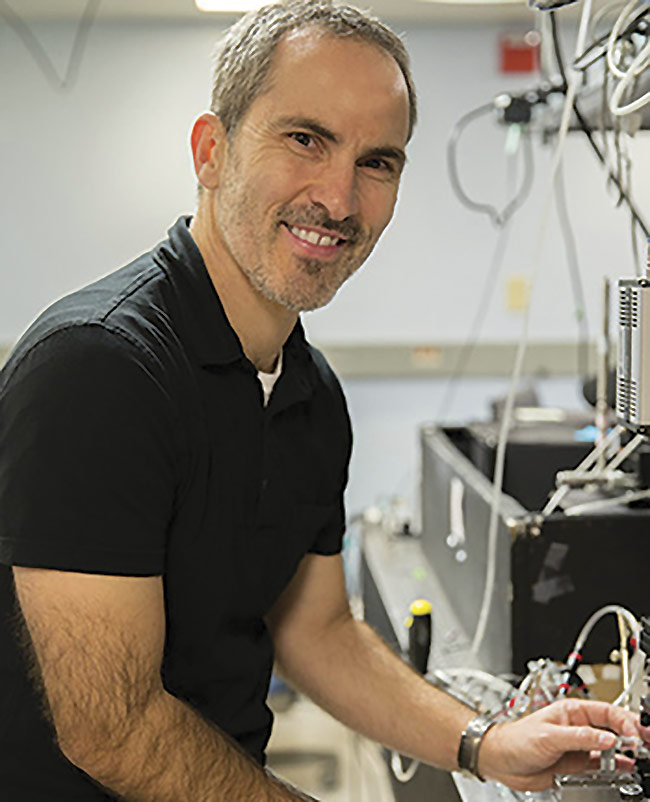Photonics Handbook3 Questions
Three Questions with Holger Schmidt

BioPhotonics spoke with Holger Schmidt, Ph.D., distinguished professor of electrical and computer engineering and the Narinder Singh Kapany chair of optoelectronics in the Baskin School of Engineering at UC Santa Cruz. He directs the W.M. Keck Center for Nanoscale Optofluidics and its nanofabrication and characterization facilities and served as the associate dean for research from 2016 to 2021. Schmidt’s team recently published a paper about the application of signal processing techniques to a newly developed optofluidic chip-based biosensor (www.doi.org/10.1364/OPTICA.489068).
|
The goal is to create a system that can accurately detect multiple biomarkers at various concentrations at once. What is the inherent value of accomplishing this? Would it be to screen people simultaneously for various diseases, for example?
That’s exactly right. It’s often desirable to look for multiple biomarkers at once found in samples of saliva, serum, or blood, especially when the diseases in question have similar early symptoms. For example, a flu panel looks for influenza A, influenza B, parainfluenza, RSV, etc. Another example would be to distinguish between different strains during an Ebola outbreak or different SARS-CoV-2 strains, or to look for both hepatitis C, hepatitis B, and HIV. We have reported simultaneous detection of single proteins in the same experiment, as opposed to using PCR [polymerase chain reaction] machines for detecting the RNA and ELISA [enzyme-linked immunosorbent assay] or other immunoassays.
The enabling technology of your system comes down to an optofluidic chip excited by laser modulation at various wavelengths, with a feedback loop and a DNN [deep neural network] to extract the data from fluorescence at varying intensities. And you use nanobeads of various sizes to test the chip’s viability?
At its fundamental core, the enabling technology is to use optical waveguides to excite fluorescent particles that flow through a microfluidic channel, and then capture the light they emit. This approach has enabled the analysis of single particles, including DNA, RNA, whole viruses, and proteins, starting from real-world samples, e.g., saliva, serum, or blood. We added multiplexing by creating different excitation spot patterns with multimode interference waveguides. Here, the spot patterns are differentiated by wavelength, but we have also implemented different spot patterns in multiple fluidic channels, and performed combinations of the two techniques. In this work, we have added the ability to measure different target particles that are present at very different concentrations. We do that by using a dynamic feedback loop to reduce the excitation power for the target that has such a high concentration that its fluorescence signal would overwhelm the one from a lower-concentration target. We demonstrated this new approach with fluorescent nanobeads, but it would work equally well with labeled proteins or nucleic acids that we have analyzed before. Finally, the neural network analysis provided by an in-house algorithm allows us to detect the different fluorescence patterns in real time with vastly improved sensitivity and accuracy.
Now that you have proved that a system like this can work, what do you see as roadblocks that remain for commercial
production?
The optofluidic core technology is being exclusively commercialized by Fluxus Inc., a subsidiary of Fujirebio Holdings Inc., right now. As always, the path toward commercial production includes design for manufacturing, process and product development of chip consumables and reagents, design and development of instruments, and manufacturing pilots and scale-up, as well as clinical studies and regulatory approval. The technology can potentially be used for all areas of molecular diagnostics, such as biomarker discovery, infectious diseases, and oncology. Details on clinical trials will be released in the near future.
Published: September 2023